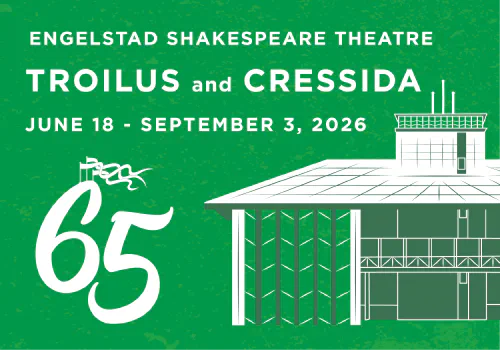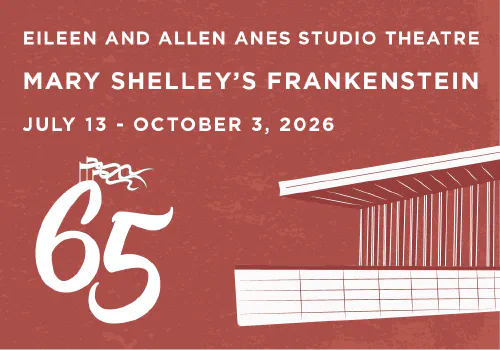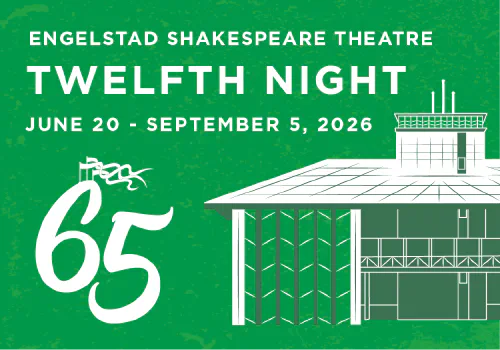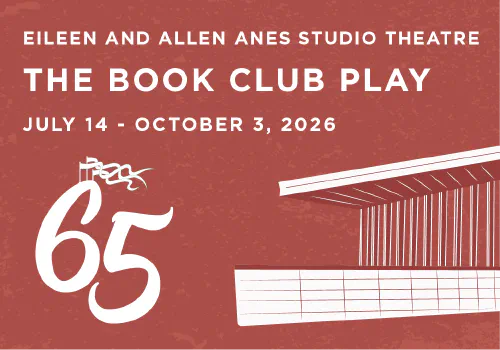By Stephanie Chidester
Much Ado about Nothing—the title sounds, to a modern ear, offhand and self-effacing; we might expect the play that follows such a beginning to be a marvelous piece of fluff and not much more. However, the play and the title itself are weightier than they initially seem. Shakespeare used two other such titles—Twelfth Night, or What You Will and As You Like It—both of which send unexpected reverberations of meaning throughout their respective plays, the former with its reference to the Epiphany and the topsy-turvy world of a saturnalian celebration, and the latter with its implications about how the characters (and the audience itself) see the world in general and the Forest of Arden in particular.
Much Ado about Nothing is no different, but we modern audiences do not pick up the deeper resonances as quickly as an Elizabethan would, simply because of a shift in pronunciation. We get our first real glimpse of the pun in the title when Don Pedro says, “Note notes, forsooth, and nothing” (2.3.57). As A. R. Humphreys explains, “that ‘nothing’, colloquially spoken, was close to or identical with ‘noting’, is the basis of Shakespearean puns, especially in a context of musical ‘noting’. A similar pun, though non-musical, is conceivable here” (Introduction, The Arden Shakespeare: Much Ado about Nothing, [London and New York: Methuen, 1981], 4).
The play is, in fact, driven by the “noting” of scenes or conversations and the characters’ reactions to these observations; “noting” seems to be the thematic glue that binds the various plot elements together. When he wrote the play in 1598, Shakespeare assembled the Hero-Claudio plot line from bits and pieces of Ariosto’s Orlando Furioso (canto 5) and Spencer’s The Faerie Queene (book 2), and added details about Claudio and Don Pedro from Bandello’s La Prima Parte de la Novelle (novella 22). For the characters of Beatrice and Benedick, Shakespeare drew not so much on a specific story or plot as on the tradition of wit combat and on characters from his own earlier comedies; these two characters can be seen, in fact, as wittier and more mature versions of Kate and Petruchio from The Taming of the Shrew. Dogberry and Verges also have no clear literary source, but seem instead to be taken from Shakespeare’s England.
These characters, different though they may be, mesh together (and frequently clash) through their observations, chance overhearings, and deliberate eavesdroppings. The first sign of this comes early in act 1. When Claudio asks Benedick what he thinks of Hero, Benedick responds, “I noted her not, but I looked on her” (1.1.164). It becomes increasingly clear that they see in Hero two entirely different people. To Claudio she is “a modest young lady,” “a jewel,” and “the sweetest lady that ever I look’d on (1.1.165, 181, 187 8), but to Benedick, “she’s too low for a high praise, too brown for a fair praise, and too little for a great praise” (1.1.171 73).
This is, as John Wilders “notes,” “a play much concerned with the ways in which people perceive one another, with our tendency to see in other people whatever by character and experience we are predisposed to see” (New Prefaces to Shakespeare [Oxford: Basil Blackwell, 1988], 147). So we must consider that Claudio is describing what he sees through the hazy mists of romantic attraction, and that Benedick (whatever he may say) is analyzing her through the mask of “a profess’d tyrant to their sex” (1.1.168 9); neither of them may be seeing Hero as she really is.
Claudio, however, has an unfortunate tendency to believe exactly what he sees, and his eyesight proves more powerful than his faith in Don Pedro and his love for Hero. When Don John, in his first bit of mischief, suggests to Claudio that Don Pedro is courting Hero for himself, Claudio takes what he sees for truth. And he is not convinced otherwise until Don Pedro actually hands Hero over to him.
Benedick also believes what his eyes show him: “The prince hath got your Hero. . . . But did you think the prince would have serv’d you thus?” (2.1.191 92, 195 6). But Benedick, at least, may be excused by his ignorance of Pedro’s intent to woo in Claudio’s name. This excuse cannot be made for Claudio; he seems more willing to trust what he sees rather than what he believes in his heart or knows in his mind to be true.
It is this quality that enables Don John to convince Claudio that Hero is unchaste; so when Claudio sees Margaret, impersonating Hero, in intimate conversation with Borachio, he disregards what faith (if any) he had in her, abandons his earlier observation that she is “a modest young lady” (1.1.165), and determines to shame her at the marriage ceremony. In his relationships with Don Pedro and Hero, visual proof (in both cases provided by a thorough-going villain) takes precedence over previous experience.
Eyesight, however, is not the only deceiving sense; hearing is also included in the play’s treatment of “noting.” At the beginning of act 2, scene 1, we learn that one of Antonio’s servants happened to overhear Claudio and Don Pedro making plans for the winning of Hero, but the servant must not have heard the conversation in its entirety because he runs to Antonio with the story that Don Pedro means to court Hero in earnest. Auditory observations can apparently be just as unreliable as visual ones.
The next eavesdropping scene, carefully engineered by the “love-gods” (2.1.386) for the gulling of Beatrice and Benedick, is yet another demonstration that what we see and hear is not necessarily what is. Just as Don John and Borachio create an event to deceive Claudio, Don Pedro and his confederates act out a scene for Benedick, and Hero and Ursula do the same for Beatrice. The quarrelsome couple believe what the “love-gods” say because on some level it’s true and because Beatrice and Benedick want to believe that each is in love with the other. In the same way that we see what “we are predisposed to see” (Wilders 147), we also hear (and believe) what we are predisposed to hear.
The final (and perhaps most important) overhearing connects the comic subplot of the constabulary with the world of Don John and Don Pedro. Despite their lack of sophistication and their abuse of the English language, Dogberry, Verges, and the rest of the watch discover Don John’s plotting and manage to sort out the confusion created by the aristocrats.
Much Ado about Nothing is, as John Wilders says, “a play about ‘noting’, about the various and conflicting ways in which we respond to and judge other people” (147). It is about the flexibility of reality—our ability to manipulate what other people observe and our occasional tendency to let biases influence our perceptions. And finally, it is about the inadequacy of “noting” the world with eyes and ears only, and the importance of relying on one’s experience with and consequent faith in other human beings. Much Ado about Nothing is all this, and marvelous comedy too.










